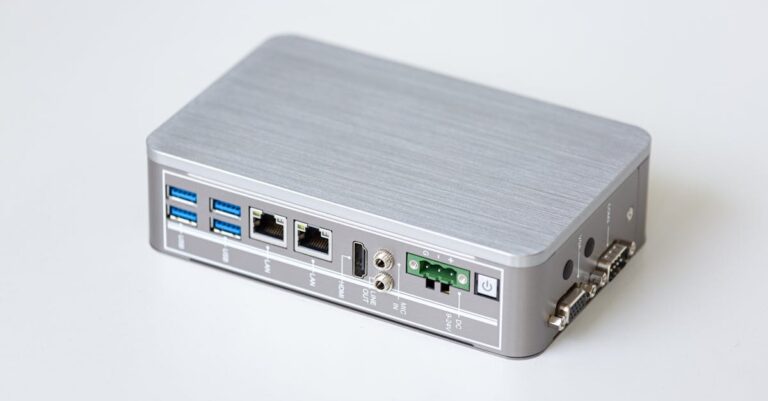Table Of Contents
The Importance Of Switches In Broadband Connectivity | Unlocking the Significance of Switches in Broadband Connectivity
Key Takeaways
- Grasping Network Switches
- Significance of Network Switches in High-Speed Internet
- Assessing the Value of Switches in Broadband Connections
- Explaining Broadband Internet and Networking Switches
Understanding Network Switches
Defining network switches involves understanding their critical role in broadband connectivity. These devices, also known as ethernet switches or LAN switches, are paramount for managing internet connectivity within a network. By efficiently routing data between devices through ethernet cables, these switches facilitate seamless transmission speeds, especially with the prevalence of gigabit ethernet. The importance of switches in broadband connectivity cannot be overstated, as they determine the overall efficiency and speed of a network, whether it pertains to wired or wireless connectivity. Ethernet addresses are efficiently managed by these switches, ensuring that data packets reach their intended destinations swiftly and accurately.
Defining Network Switches
Network switches play a pivotal role in enhancing broadband connectivity by facilitating the efficient transfer of data between network-connected devices. These devices come equipped with multiple ethernet ports that enable seamless communication between various internet-connected devices within a network. Some advanced switches, like layer 3 switches, can process data further and are crucial in telecommunications for efficient routing of ethernet packets. In addition, modular switches allow for flexibility in expanding network capacity by adding more switch ports as needed.
Furthermore, network switches also support wireless connectivity through features like power over ethernet, making them indispensable in modern networks. Stackable switches provide scalability for growing network demands, while multilayer switches offer enhanced functionality by operating at both layer 2 and layer 3 of the OSI model. Overall, the importance of switches in broadband connectivity cannot be overstated, as they serve as the central connector that enables communication and data exchange among network-connected devices efficiently.
How Network Switches Function
Network switches play a fundamental role in the efficient flow of data within a network infrastructure. These networking devices facilitate the transmission of ethernet frames across different devices within a Local Area Network (LAN) through the process of lan switching. By utilizing switch mac address tables, switches can directly forward data packets to the appropriate destination, ensuring optimized network bandwidth utilization. This capability is instrumental for the telecommunications provider in maintaining high-speed connections for end-users, highlighting The Importance of Switches in Broadband Connectivity.
In the realm of networking, switches act as a pivotal component that enhances network performance by effectively managing data traffic. By functioning as a network bridge, switches enable seamless communication between various devices connected to the network. Through the utilization of advanced networking hardware, such as fast ethernet ports, switches facilitate rapid data transmission speeds, crucial for sustaining a reliable Wide Area Network (WAN). This integral role of switches in streamlining communications network operations underscores The Importance of Switches in Broadband Connectivity in today’s digital landscape.
Role of Network Switches in Broadband Connectivity
To understand the importance of switches in broadband connectivity, it is crucial to grasp how network switches function within a local network. These high-quality network switches act as the central connection point that facilitates effective connectivity by using packet switching to direct data between devices. The significance of switches in broadband connectivity is paramount as they enable ethernet connections to ensure seamless communication and data transfer within the network. Additionally, high-end network switches can interconnect multiple network switches, enhancing the overall network connectivity and paving the way for high-speed broadband access.
| Switch Model | Ports | Speed | Managed/Unmanaged | Typical Use Case |
|---|---|---|---|---|
| Cisco SG350-10 | 10 | 1 Gbps | Managed | Small to Medium Businesses |
| Netgear GS108T | 8 | 1 Gbps | Managed | Home Offices and Small Businesses |
| D-Link DGS-1210-28 | 28 | 1 Gbps | Managed | Enterprise Networks |
| TP-Link TL-SG108 | 8 | 1 Gbps | Unmanaged | Home Networking |
Significance of Network Switches in Data Transfer
Network switches play a crucial role in delivering internet connectivity and network communication across a wide array of devices. These devices range from smartphones to laptops and are integral in the smooth functioning of various operations. Many switches, divided into LAN networks, create multiple collision domains, each with its broadband or other independent broadband for seamless wireless and wired connections. The Importance of Switches in Broadband Connectivity is evident as common switches, smart switches, access switches, and certain switches further wireless connectivity and remote connectivity through an array of connectivity ports.
Network switches function by efficiently directing data packets to their intended destinations. By doing so, these switches facilitate a rapid and secure transfer of information between devices connected to the network. Moreover, switches enable a network to operate smoothly by avoiding data congestion and collisions. This approach ensures that communication remains efficient and reliable, contributing to the overall performance of the network infrastructure. The Importance of Switches in Broadband Connectivity is highlighted by their ability to manage the flow of data effectively, supporting a variety of devices and enhancing the user experience.
Network Switches and Internet Speeds
Network switches nowadays play a pivotal role in enhancing internet speeds by efficiently managing network connections. Unlike basic switches, which are limited in their functionality, modern switches offer advanced features that optimize broadband connectivity. The usage of standard ethernet cables with built-in RJ-45/ethernet switch identifier-link ensures seamless data transfer, resulting in faster internet speeds.
The importance of switches in broadband connectivity is further highlighted by their ability to handle multiple switches within a network infrastructure. Advanced switches can support remote switches, core switches, and even cable connections, enabling a robust network setup. This contrasts with older setups, where standard ethernet cables were used directly, leading to slower transmission speeds. Today, the dynamic capabilities of modern switches enable a more efficient flow of data, contributing significantly to the overall performance of internet speeds.
Evaluating the Importance of Switches in Broadband Connectivity
Enhancing broadband performance hinges on the significance of switches in broadband connectivity. Ethernet devices rely on the intelligence of high-speed switches for seamless connectivity within a network. Data center switches and common switch interfaces play a pivotal role in building a robust switch infrastructure. A PoE-capable network switch facilitates connections by powering devices through the same ethernet cable that transmits data. Leveraging fixed-configuration switches ensures that the ethernet technology is optimally utilized, illustrating the importance of switches in broadband connectivity. A LAN switch delivers the necessary connectivity and speed for ethernet devices, underlining the critical role of physical switches in maintaining efficient data transfer.
Enhancing Broadband Performance with Network Switches
To enhance broadband performance with network switches, it is crucial to understand the importance of switches in broadband connectivity. Network switches play a significant role in managing additional internet connections efficiently. By utilizing specific switch ports, users can seamlessly connect devices and establish new connections to optimize their wired networks. These physical network connections enable users to allocate bandwidth effectively, ensuring a smooth data flow across various devices and telecommunications provider networks.
Moreover, the versatility of switches extends to virtual switches, which offer flexibility in connecting devices to specific switch ports. This common networking device is instrumental in directing data traffic to the intended destination within a network. By strategically configuring different switch ports, users can effectively manage and prioritize specific connections, further enhancing the overall performance of their broadband connectivity. Leveraging the importance of switches in broadband connectivity empowers users to tailor their network setups to meet their specific needs and optimize their internet experience.
The Direct Correlation of Network Switches and Broadband Connectivity
Network switches play a crucial role in broadband connectivity by efficiently connecting network segments and catering to various networking needs. With a built-in switch, they provide additional Ethernet ports for connecting devices, ultimately enhancing the importance of switches in broadband connectivity. Unmanaged switches, edge switches, and large switches are all examples of network switches that can support a multitude of connected devices and network-connected devices.
The importance of switches in broadband connectivity also extends to WAN connections, where network cable consolidation is simplified through the use of switches. An eight-port switch, for instance, can effortlessly connect network segments and boost the speed and performance of network-connected devices. Switches don’t just facilitate connectivity; they are the backbone of a seamless network infrastructure that efficiently connects various devices for optimal networking experiences.
- Network switches enhance broadband connectivity by efficiently connecting network segments
- Switches provide additional Ethernet ports for connecting devices
- Examples of network switches include unmanaged switches, edge switches, and large switches
- Switches are crucial for WAN connections and simplify network cable consolidation
- An eight-port switch can boost speed and performance of network-connected devices
Elaborating on Broadband Connectivity and Network Switches
In the realm of broadband connectivity, network switches play a crucial role in ensuring seamless internet communications and data transfer among networked devices. The importance of switches in broadband connectivity lies in their ability to direct connections efficiently between devices, whether through RJ-45/Ethernet or advanced optic switches. These switches, including aggregation switches, facilitate network-wide disruptions, enabling high-availability connections and responsive networks. An advanced switch can manage the traffic flow by directing it to the next switch or the same switch for optimal transmission, reducing network congestion and enhancing overall performance. This intricate web of switches ensures that wide-area networking functions smoothly, mitigating network disruptions and building a foundation for the future of networking technology.
The Implications of Advanced Network Switches on Broadband Connectivity
Network switches play a critical role in network communication by efficiently directing data through link connections. The switching functions of these network infrastructure devices ensure that data packets are transmitted accurately to their intended destinations. With modern networking demanding higher speeds and more reliable connections, the use of switches has become paramount in resolving network problems and maintaining network performance.
Using a single switch or incorporating multiple switches into a network allows for the seamless transmission of data packets. By managing mac-layer Ethernet addresses and routing data packets to the appropriate ports, switches enhance network connectivity and prevent data congestion. The switch’s ability to segregate network components and prioritize data flow ensures that network communication remains stable and efficient, highlighting the importance of switches in broadband connectivity.
Building the Future: Broadband Connectivity and Network Switches
The importance of switches in broadband connectivity cannot be overstated. These integral networking equipment form the backbone of networking architecture, facilitating effective switching between interconnected devices. Switches play a crucial role in directing data packets based on MAC address connections, optimizing network speed and overall performance. By providing a physical connection for devices to connect LANs and wireless access points, switches enhance the efficiency of a wireless LAN infrastructure, thus improving the overall internet plan experience.
In a world where specific internet and connection methods are essential, network switches serve as the multiport network bridge that brings together diverse devices and ensures seamless communication. Their role in establishing reliable connections and enhancing network design is paramount for the future of broadband connectivity. As we build towards a more interconnected future, the effective utilization of switches is key in unlocking the full potential of our networking capabilities.
Conclusion
Network switches play a vital role in broadband connectivity by facilitating efficient data transfer within a network system. With advanced networking features and managed switches, these devices ensure a seamless flow of information between different network segments. The logical connections established through network interface ports enhance internal network communication, thereby optimizing network usage. The importance of switches in broadband connectivity cannot be understated, as they directly impact internet speeds and help in mitigating network issues. Looking forward, the continuous evolution of network switches will continue to shape the future of broadband connectivity.
FAQS
What distinguishes layer 3 switches from regular network switches in a broadband connectivity setup?
Layer 3 switches, also known as network switches today, play a crucial role in delivering internet connectivity and network communication across a broad network. While regular network switches divide the LAN network into many collision domains, each with its broadband, layer 3 switches go a step further by utilizing Ethernet and providing intelligent routing capabilities to separate network devices more efficiently.
How do network switches contribute to the delivery of internet connectivity and network communication in broadband setups?
Network switches play a crucial role in delivering internet connectivity and network communication across a broadband connection. These switches use intelligent functions to forward data to the appropriate devices in the network. By utilizing Ethernet connections, network switches can efficiently manage the flow of data to many network devices. Each switch port acts as a separate connection point, ensuring that data is sent to the correct destination. This networking design allows for additional connections and enables the switch to work effectively in distributing information to various connected devices.
How do layer 3 switches contribute to broadband connectivity setups?
Layer 3 switches play a crucial role in delivering internet connectivity and network communication across a broadband setup. These intelligent switches utilize Ethernet technology to forward data packets to their destination based on IP addresses, making them essential for routing and interconnecting various networks within a larger infrastructure.
What is the role of network switches in ensuring stable broadband connectivity?
Network switches play a crucial role in delivering internet connectivity and network communication across a broadband setup. These switches are responsible for forwarding data to the appropriate devices within the network, ensuring efficient communication and stable connections. Additionally, by providing connectivity choices and enabling wireless connections, network switches contribute significantly to the seamless operation of broadband networks.
How do network switches ensure a reliable broadband connection for users?
Network switches play a crucial role in delivering internet connectivity and network communication across a broadband network. These switches forward data between devices connected to them, ensuring that information is efficiently transmitted where it needs to go. By managing the traffic flow in a network, switches help maintain stable broadband connectivity for users.
How do switches improve the reliability of broadband connectivity for users?
Switches play a crucial role in delivering internet connectivity and network communication across a broadband setup. By forwarding data between devices connected to them, such as computers, printers, and servers, switches ensure a stable and reliable broadband connection for users. This is achieved as each switch receives data and then transmits it only to the specific device it is intended for, rather than broadcasting it to all connected devices. Additionally, switches can also segment a network, providing separate switch ports for different devices and optimizing the flow of data within a network.
How do switches contribute to the reliability of broadband connectivity for users?
Switches play a crucial role in delivering internet connectivity and network communication across a broadband setup. These devices, such as layer 3 switches, ensure stable broadband connectivity by efficiently forwarding data packets to the appropriate destinations within the network. By managing traffic flow and connecting different devices through switch ports, switches, including layer 3 switches, improve the reliability and performance of broadband connections for users.
How do network switches enhance broadband connectivity reliability for users in a network setup?
Network switches play a crucial role in delivering internet connectivity and network communication across a broadband setup. By efficiently forwarding data between devices connected to the network, such switches ensure a stable and reliable broadband connection for users. The switch works by connecting devices using Ethernet cables with RJ-45 connectors, with each device connected to a certain switch port for seamless data transmission. This helps in optimizing the flow of data and improving the overall performance of the network.
How does the wiring impact the functionality of switches in broadband connectivity setups?
The wiring plays a crucial role in delivering internet connectivity and network communication across a network setup. Through a reliable wiring infrastructure, switches can efficiently forward data packets to their designated destinations, ensuring stable and seamless connectivity for users.
How crucial is the role of switches in maintaining a stable broadband connection for users in a network setup?
Switches play a vital role in ensuring a stable broadband connection for users in a network setup. These devices, such as layer 3 switches and regular network switches, manage the flow of data within the network. By connecting various devices and forwarding data packets accurately, switches enhance the reliability of broadband connectivity for users.







